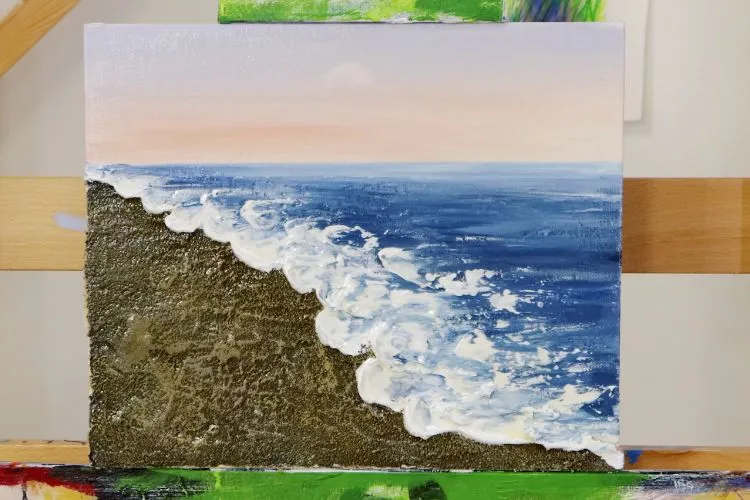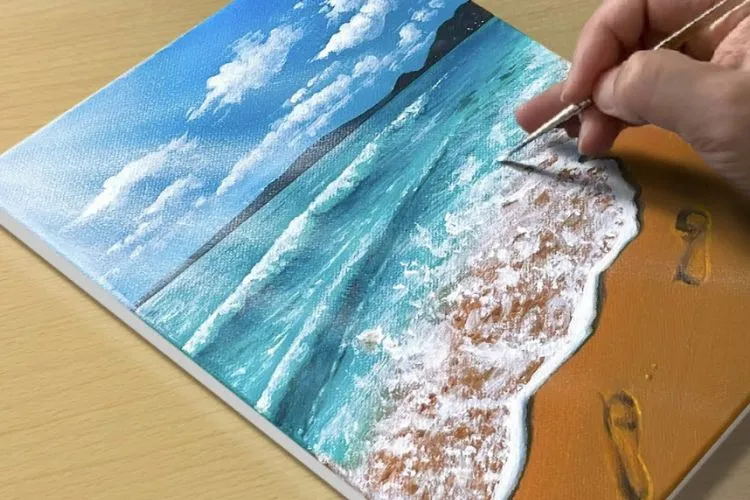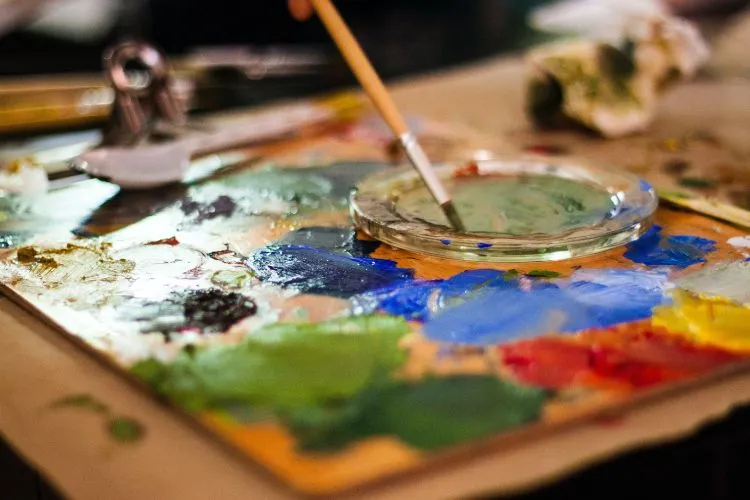Acrylic paint is a staple in the craft world, used by DIY enthusiasts, artists, and homeowners alike. Its quick-drying nature and versatility make it a favored choice for projects of varying scale.
The real question often arises during the finishing phase: Can you sand acrylic paint to achieve that flawless finish?

Understanding Acrylic Paint
Acrylic is a water-based paint known for its fast-drying property. It offers a durable coat and can adhere to a range of surfaces including wood, canvas, and metal.
Unlike oil paints, acrylics dry through water evaporation, which means they can dry within hours as opposed to days.
Prepping for Sanding
Before getting into the act of sanding, it’s crucial that the paint is completely dry. Manufacturers usually advise waiting 24 to 72 hours.
Ensure the surface is clean, free from dust, grease, and other contaminants. The right sandpaper grit is also vital—start with a coarse grit for rough shaping and finish with a fine grit for smoothing.
Can You Sand Acrylic Paint?
Safety Measures
Sanding can produce fine particles that are harmful if inhaled. Always wear a dust mask and safety goggles to protect your lungs and eyes. Ventilation is also key to keeping the air in your workspace clean.
Selecting the Right Tools
Choose your tools based on the project’s requirements. Sandpaper comes in many forms including sheets for handheld use, discs for orbital sanders, or blocks for easy handling.
Dry sanding is the usual method, but for a high-end finish without dust, wet sanding is an option.
The Sanding Process
The goal of sanding is to smooth the paint layer and prepare it for further coats or to finalize the finish. Use even pressure and move in circular motions or with the grain of the surface.
Avoid over-sanding, as this can wear through the paint layer.
Post-Sanding Steps
After sanding, remove all dust with a damp cloth or a tack cloth. Inspect the surface for any missed spots or imperfections before considering additional paint layers.
For a new layer, ensure the surface is clean and follow up with the paint as guided by the manufacturer.

Troubleshooting Common Issues
Sanding might sometimes result in peeling or scratching. If paint peels, it’s likely not dry enough or the surface wasn’t properly prepped. Scratches often occur when using a sandpaper that’s too coarse.
Fix these by cleaning the area and applying a new layer of paint after sanding with a finer grit.
Advanced Techniques
For high-detail projects, wet sanding can offer more control and a finer finish. And if you’re seeking an even smoother surface, a sanding sealer can fill in any tiny imperfections before the final sanding.
Alternatives to Sanding
Sometimes sanding isn’t the right method. For quick paint removal, a scraper can be effective.
Chemical paint strippers offer an alternative means for removing or smoothing paint but handle these with care and follow all safety guidelines.
Pro Tips
Before starting a sanding project, practice on a spare piece. Begin with a higher grit and move to lower ones gradually.
Power tools should be used with great care to avoid damaging the paint layer.
You may also read: Is Acrylic Paint Breathable?
Pre-Sanding Surface Preparation Techniques
Before embarking on the sanding process, proper surface preparation is paramount to ensure the best outcome for your acrylic paint application. Degreasing is a critical first step, especially for surfaces that come into regular contact with hands or machinery, as oils can impede paint adhesion.

Using a degreaser or a mild detergent can effectively remove these oils. Applying a primer is also essential, particularly for non-porous or very smooth surfaces; it acts as an intermediary layer that enhances the paint’s ability to adhere and can significantly improve its longevity and appearance.
Additionally, lightly sanding the surface before applying acrylic paint can create a texture that further promotes adhesion, reducing the chances of peeling or flaking after the paint has dried.
These preparatory steps form a strong foundation for the acrylic paint, facilitating a smoother sanding process and a more polished final product.
Sanding Techniques for Different Surfaces
Sanding acrylic paint requires adaptability, as the technique varies depending on the underlying material. For wood, it’s important to sand along the grain to avoid creating scratches that are difficult to cover.
Begin with a medium-grit sandpaper and finish with a fine-grit to achieve a smooth surface. When dealing with metal, ensure it’s free from rust and use a fine-grit sandpaper to avoid scratching the surface too deeply; here, even and gentle pressure is key.
For plastics, a very fine-grit sandpaper is necessary to avoid creating gouges in the softer surface. With plastic, sanding should be done sparingly and with minimal pressure to achieve a smooth finish without damaging the material.
Each material demands a nuanced approach to sanding acrylic paint, emphasizing the need for an appropriate choice of sandpaper grit and sanding technique to ensure a flawless finish.
Health and Safety: Beyond the Basics
Ventilation is crucial when sanding acrylic paint, as it helps disperse potentially harmful particles. A workspace with ample airflow reduces inhalation risks. Wearing a properly fitted respirator, not just a dust mask, provides better protection against fine particulates.
Additionally, using gloves prevents skin contact with irritant substances, and safety goggles protect against eye irritation from airborne particles.
Always follow manufacturer safety data sheets for specific product recommendations to minimize health risks during your projects.

Frequently Asked Questions (FAQs)
Can you wet sand acrylic paint?
Yes, wet sanding is a technique used to minimize dust and achieve a very smooth finish.
How long should acrylic paint dry before sanding?
Ideally, wait 24 to 72 hours for acrylic paint to fully cure.
What is the best grit sandpaper for acrylic paint?
Start with a coarse grit to fix major imperfections and switch to a fine grit for final smoothing.
How can I fix sanding mistakes on acrylic paint?
Clean the area and reapply a coat of paint, then sand again once it’s dry.
Can sanding acrylic paint make it glossy or matte?
Sanding can dull the finish. For shine, use a glossy varnish; for a matte look, a matte varnish is appropriate after sanding.
Conclusion:
Sanding acrylic paint is a technique within reach for anyone looking to achieve a professional look in their paint jobs. With the proper tools and techniques, it is indeed possible to sand acrylic paint successfully.

Meet Isabella Anderson, your acrylic painting mentor with over a decade of brush-wielding mastery. Dive into the colorful world of acrylics with her expert guidance, featured exclusively on ‘Acrylic Authority.’ Unleash your inner artist and explore the limitless possibilities of this versatile medium alongside a true acrylic aficionado.
